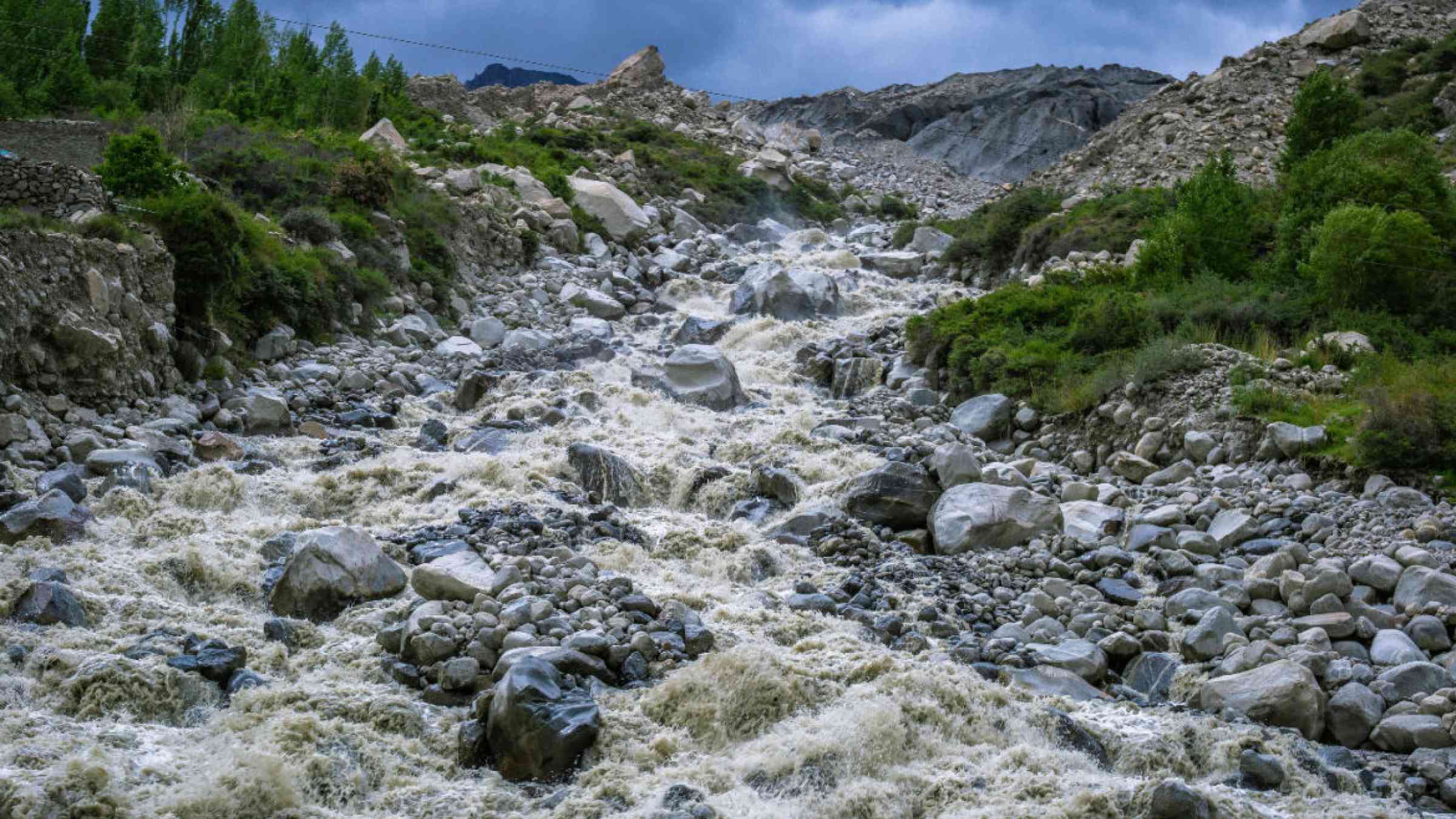Glacier recession in the Himalayas increases threat of catastrophic outburst floods, says new study

In a groundbreaking research effort, scientists from IIT Jammu have shed light on the growing concern of Glacial Lake Outburst Floods (GLOFs) in the Himalayas. Dr. Divyesh Varade, Assistant Professor of Geomatics, and Mr. Hemant Singh, a PhD student from the Department of Civil Engineering, IIT Jammu, along with their team, have conducted a comprehensive study on the cascaded extreme flood events caused by GLOFs in the Hunza valley of the Karakoram ranges.
Their recent publication, titled "Assessment of potential present and future glacial lake outburst flood hazard in the Hunza Valley: A case study of Shisper and Mochowar Glacier," in the esteemed journal Science of the Total Environment, has brought attention to the dire situation. The study analyzes the glacial lake outbursts that have already occurred in the Hunza Valley, including those in 2019, 2020, and 2022.
The research team focused on the bifurcation of the Shisper glacier, which has led to the formation of an ice-dammed lake. This lake, originating from the ice-melt of the Mochowar glacier, has been identified as susceptible to GLOFs in the past. Dr. Divyesh and Mr. Hemant's study reveals that the lake has been expanding since its origin in 2018. Notably, the team investigated a critical GLOF event that took place on 7th May 2022, stemming from the Shisper glacier ice-dammed lake. The analysis determined a release volume of 6.23×106 m3 and a peak discharge of approximately 1505 m3s−1.
Collaborating with scientists from various institutions, including Maximillian VDW Vries from the School of Geography and the Environment at the University of Oxford and Mr. Kirtan Adhikari from the Royal University of Bhutan, the research team emphasized the urgent need for hydrometeorological monitoring of glacial regions in the Himalayas. Furthermore, they highlighted the critical importance of assessing climate change impacts and enhancing disaster response mechanisms in the region.
The study's findings raise concerns about the possibility of similar glacial hazards occurring in other parts of the Himalayas. The researchers stressed the necessity for government agencies to develop monitoring and early warning systems in these vulnerable regions. The proactive implementation of such systems will play a crucial role in mitigating potential disasters and safeguarding the lives and livelihoods of the communities residing in these high-altitude areas.
The IIT Jammu team's groundbreaking research serves as a wake-up call, drawing attention to the escalating threat of glacial lake outburst floods in the Himalayas. As climate change continues to impact these fragile ecosystems, urgent action is needed to protect both the environment and the communities that depend on them.